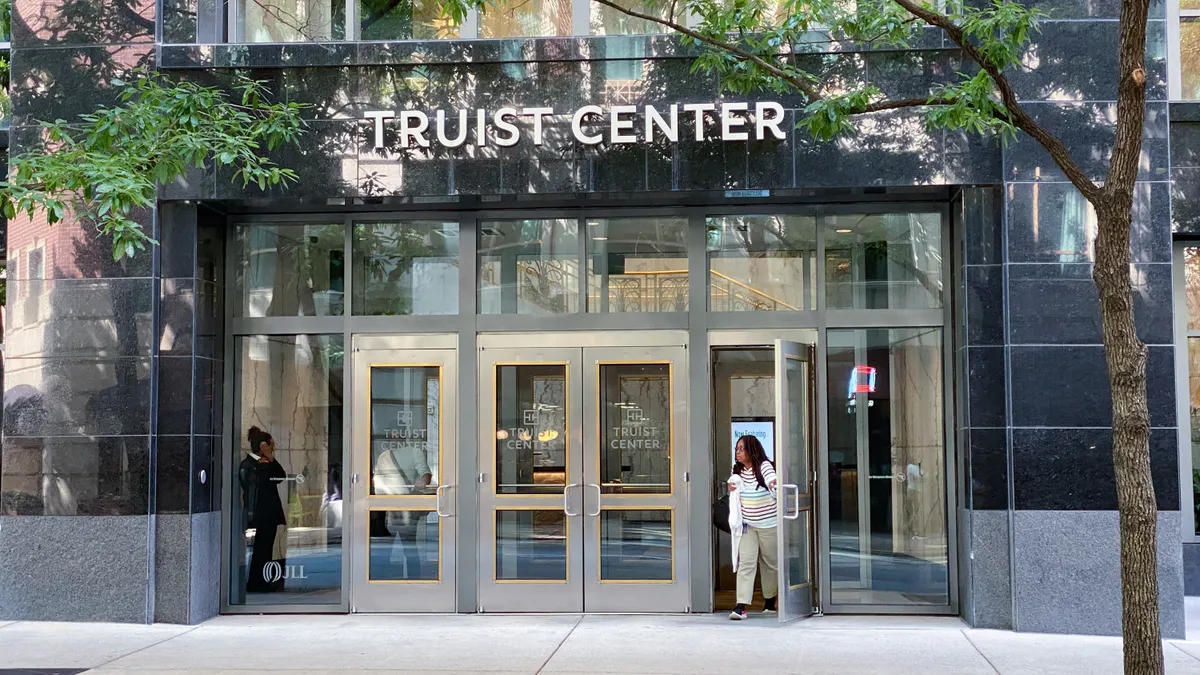Dive Brief:
- Wells Fargo's net income dropped 89% from this time last year, to $653 million from $5.9 billion, the bank said in its first-quarter earnings statement Tuesday.
- Much of the decrease stems from $3.1 billion in reserves the bank set aside in case loans sour, plus a $950 million impairment of securities. The combined $4 billion in loan-loss provisions — the bank’s most in a decade and nearly five times what it allocated in that category a year ago — illustrate the impact of the current expected credit loss standard, implemented in January, which forces banks to recognize potential losses more quickly.
- However, deposits at the bank are up 6% and loans have increased 2% over 2019’s first quarter.
Dive Insight:
Apart from the change in accounting standards, the loan-loss provisions are a testament to the tenuous position in which the coronavirus crisis has put the economy — and Wells Fargo’s clients.
CEO Charlie Scharf, in his statement Tuesday, focused on the services the bank is providing and its commitment to customers during the pandemic.
"For our customers, we've suspended residential property foreclosure sales, offered fee waivers, and provided payment deferrals, among other actions," Scharf said, praising employees who continue to work on the "front lines" and citing Wells Fargo’s $175 million contribution to coronavirus relief.
By most business metrics, the first quarter was a rough one for the nation’s fourth-largest bank. Revenue decreased to $17.7 billion from $21.6 billion in last year’s first quarter. Net interest income was down nearly $1 billion to $11.3 billion. And non-interest income was down nearly a third, to $6.4 billion.
Loans and deposits were an exception. But Kyle Sanders, an analyst at Edward Jones, said loan growth, in this case, was "more indicative of businesses facing challenges and uncertainty."
"We attribute most of the loan growth to commercial clients tapping lines of credit in order to build cash reserves to weather the economic downturn," he said in a note to clients Tuesday, according to Bloomberg.
Commercial customers drew $80 billion from their lines of credit in March alone, Scharf said.
The bank was able to cut its expenses by 6% from last quarter, perhaps a sign that Scharf is following through on his January pledge to take "much of this year" to conduct reviews of the budget and broader business. "There are still big parts of the company where we are extraordinarily inefficient," he said at the time.













